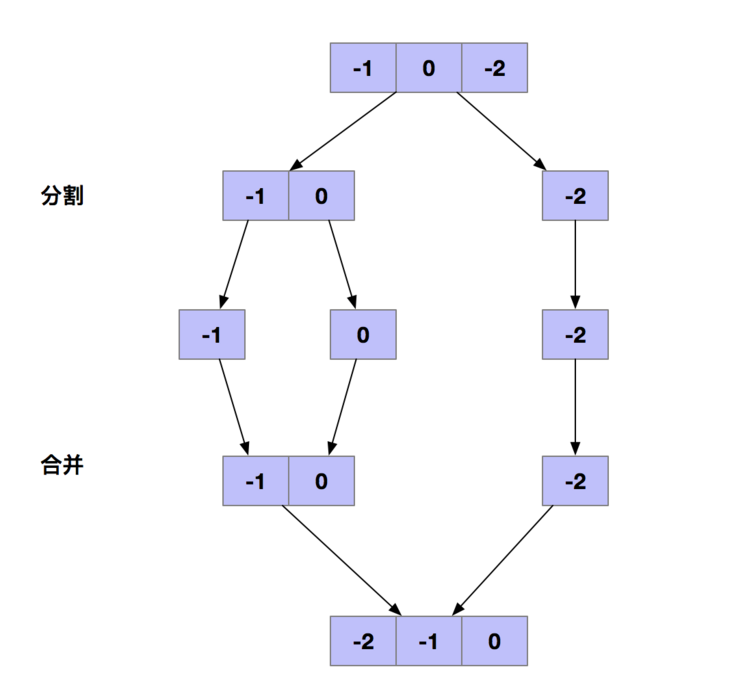More algorithm solutions, please pay attention to the official account, "programmer"
Sorting of single linked list
Problem description
LeetCode 148. Sorting linked list
Given an unordered single linked list with n nodes, it is sorted in ascending order.
Requirements: space complexity O(n), time complexity O(nlogn).
Example:
Input: [- 1,0, - 2]
Return value: {- 2, - 1,0}
Analyze problems
Because the topic requires that the time complexity is O(nlogn), the sorting algorithms with time complexity of O(nlogn) include merge sorting, quick sorting and heap sorting, among which the most suitable sorting algorithm for linked list is merge sorting.
Merge sort is based on the idea of divide and conquer. The easiest thing to think of is the top-down recursive implementation. The top-down recursive implementation mainly includes two links.
Split link
- Find the midpoint of the linked list, take the midpoint as the boundary, and split the linked list into two sub linked lists. The fast and slow pointer method can be used to find the midpoint of the linked list. The fast pointer moves 2 steps each time and the slow pointer moves 1 step each time. When the fast pointer reaches the end of the linked list, the slow pointer just points to the midpoint of the linked list.
- After finding the midpoint, cut the linked list into two sub linked lists at the midpoint.
- Then recursively split until the split linked list has only one node or is Null. At this time, the split sub linked list is ordered because it contains only one node.
Merge link
- Merge two ordered linked lists into an ordered linked list. We can use the double finger needle method.
- Execute recursively until the merge is complete.

class Solution:
def sortList(self, head):
#If the linked list is empty or contains only one node, recursion terminates
if not head or not head.next:
return head
#Use the fast and slow pointer method to find the midpoint of the linked list
slow=head
fast=head.next
while fast and fast.next:
fast=fast.next.next
slow=slow.next
#slow points to the midpoint of the linked list. The linked list is divided at the midpoint
head2=slow.next
slow.next=None
#Recursive cut split linked list
left = self.sortList(head)
right = self.sortList(head2)
#Merge the linked list and use the double finger needle method
tmp = res = ListNode(0)
while left and right:
if left.val < right.val:
tmp.next=left
left=left.next
else:
tmp.next=right
right=right.next
tmp=tmp.next
if left:
tmp.next=left
else:
tmp.next=right
return res.nextThe time complexity of the algorithm is O(n). Since top-down is implemented by recursion, if the stack space of recursive call stack is considered, the space complexity of the algorithm is O(logn).
optimization
We can also use the bottom-up method to solve it.
First, we find the length of the linked list. Then split the linked list into sub linked lists for merging.
- We use sublength to represent the length of the sub linked list to be sorted each time. Initially, sublength=1.
- Each time, the linked list is divided into several sub linked lists with a length of sublength (the length of the last sub linked list may be less than sublength), and the two sub linked lists are combined as a group. After the combination, several ordered sub linked lists with a length of sublength 2 can be obtained (the length of the last sub linked list may be less than sublength 2).
- Double the value of sublength, repeat the second step, and then merge the longer ordered sub linked list until the length of the ordered sub linked list is greater than or equal to the length of the linked list, so that the sorting of the whole linked list is completed.

Let's look at the implementation of the code.
class Solution:
def sortList(self, head):
#Merge two ordered linked lists
def merge(head1, head2):
#Sentinel Nodes
dummyHead = ListNode(0)
temp=dummyHead
while head1 and head2:
if head1.val <= head2.val:
temp.next = head1
head1 = head1.next
else:
temp.next = head2
head2 = head2.next
temp = temp.next
if head1:
temp.next = head1
else:
temp.next = head2
return dummyHead.next
#If the linked list is empty, return directly
if not head:
return head
#Traverse the linked list and find the length of the linked list
length = 0
node = head
while node:
length += 1
node = node.next
#Create a sentinel node that points to the chain header
dummyHead = ListNode(0)
dummyHead.next=head
#Initially, the length of the sub linked list is 1
subLength = 1
while subLength < length:
prev=dummyHead
cur=dummyHead.next
while cur:
#Intercept the sub linked list head1 with the length of subLength
head1 = cur
for i in range(1, subLength):
if cur.next:
cur = cur.next
else:
break
head2 = cur.next
cur.next = None
#Intercept the sub linked list head2 with the length of subLength
cur = head2
for i in range(1, subLength):
if cur and cur.next:
cur = cur.next
else:
break
#The remaining linked list nodes after interception
surplus_head = None
if cur:
surplus_head = cur.next
cur.next = None
#Merge two ordered linked lists
merged = merge(head1, head2)
#Insert the ordered linked list into the newly generated linked list
prev.next = merged
#Move the pointer to the end of the linked list
while prev.next:
prev = prev.next
#Continue merging the remaining nodes
cur=surplus_head
subLength = subLength * 2
return dummyHead.nextThe time complexity of the algorithm is O(nlogn) and the space complexity is O(1).